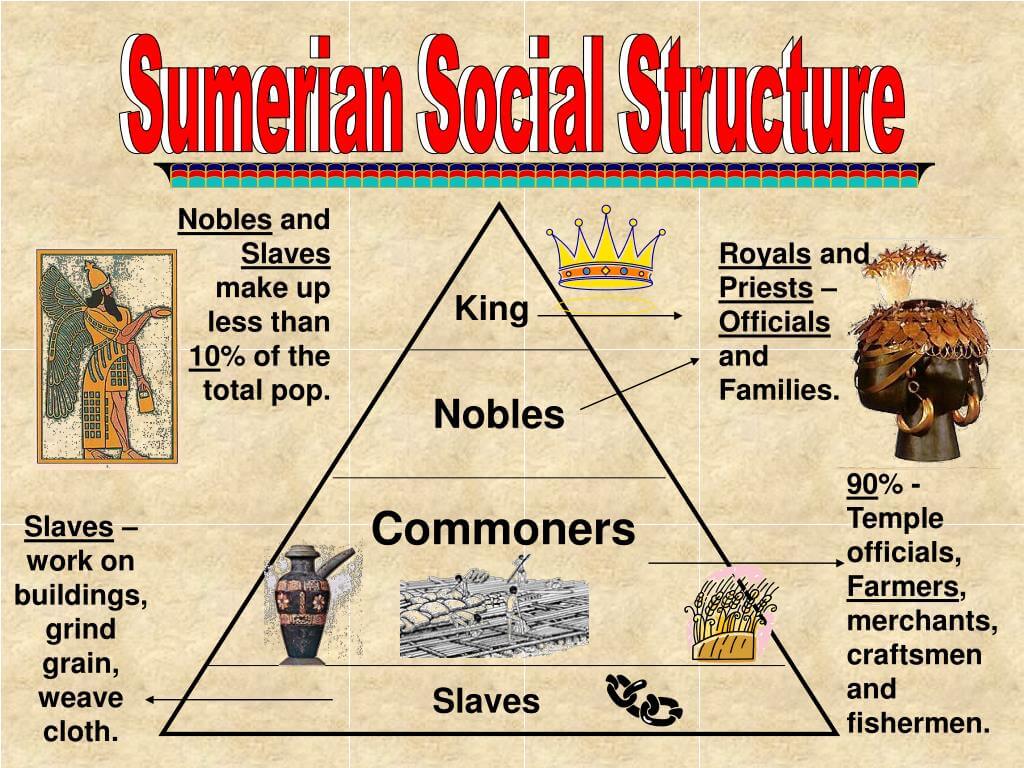In the ancient civilization of Mesopotamia, often regarded as the cradle of civilization, social structure played a pivotal role in shaping society. The social hierarchy pyramid Mesopotamia is a fascinating aspect of this culture, illustrating the intricate relationships and power dynamics that governed daily life. From rulers and priests to laborers and slaves, the roles and responsibilities were clearly defined, creating a complex web of social interaction. Understanding this social stratification not only provides insight into the lives of Mesopotamians but also sheds light on how these systems influenced governance, economics, and religious practices. This article will delve into the various strata of the social hierarchy pyramid of Mesopotamia, exploring the roles and significance of each class.
The social hierarchy was not just a rigid structure but rather a dynamic system that evolved over time. Each class contributed to the society's functioning, with the upper echelons wielding significant political and economic power while the lower classes formed the backbone of labor and agriculture. By examining the social hierarchy pyramid Mesopotamia, we can gain a deeper appreciation for how these roles were interdependent and how they shaped the trajectory of one of history's most influential civilizations.
Furthermore, the social hierarchy pyramid in Mesopotamia also provides a lens through which we can compare ancient societies with our modern understanding of social structures. What can we learn from the past? How did these ancient practices inform the development of social classes in subsequent civilizations? This exploration aims to answer these questions and more, as we journey through the layers of the Mesopotamian social hierarchy.
What Are the Main Strata of the Social Hierarchy Pyramid Mesopotamia?
At the top of the social hierarchy pyramid Mesopotamia lay the ruling elite, including kings and high priests. These individuals held absolute power and were seen as representatives of the gods on Earth. Below them were the noble class, comprising wealthy landowners and high-ranking officials. This group played a crucial role in governance and the economy, often overseeing large estates and managing resources.
How Did the Middle Class Function in Mesopotamian Society?
The middle class in Mesopotamia was primarily made up of merchants, artisans, and skilled laborers. This group was vital for trade and craftsmanship, contributing to the economy's vibrancy. Merchants traveled long distances to engage in trade, while artisans created goods that were highly valued in society. Their presence allowed for a degree of social mobility, unlike the rigid structures seen in lower classes.
Who Made Up the Lower Classes in the Social Hierarchy Pyramid Mesopotamia?
The lower classes primarily consisted of farmers, laborers, and slaves. Farmers worked the land, producing the food essential for the society's survival, while laborers took on various construction and manual jobs. Slaves, often captured in wars or born into servitude, occupied the lowest rung of the pyramid and had no rights or freedoms. Despite their low status, their labor was crucial for the economy.
What Role Did Religion Play in the Social Hierarchy of Mesopotamia?
Religion was deeply ingrained in the social hierarchy pyramid Mesopotamia, influencing every aspect of life. The king was often viewed as a god on Earth, and high priests performed rituals to appease the deities and maintain cosmic order. Temples served as both religious and economic centers, with priests managing vast resources. The intertwining of religion and governance solidified the power of the upper classes while maintaining social order.
How Did Social Mobility Work in Ancient Mesopotamia?
While the social hierarchy pyramid Mesopotamia was generally rigid, there were instances of social mobility. Successful merchants or skilled artisans could rise in status, accumulating wealth and influence. Additionally, individuals who distinguished themselves in battle or service could be rewarded with land or titles. However, for the majority, especially those in the lower classes, upward mobility was limited.
What Impact Did the Social Hierarchy Have on Mesopotamian Economy?
The social hierarchy significantly influenced the economy of Mesopotamia. The upper classes controlled land and resources, dictating economic activities. The middle class facilitated trade and production, while the lower classes provided the labor necessary for agricultural and construction projects. This structure created a thriving economy, with each class playing a distinct role in its function.
How Did the Social Hierarchy Pyramid Mesopotamia Compare to Other Ancient Civilizations?
When compared to other ancient civilizations, the social hierarchy pyramid Mesopotamia exhibits both similarities and differences. Like Egypt and Greece, Mesopotamia had a distinct class system with an elite ruling class. However, the Mesopotamian middle class was more pronounced than in some other cultures, allowing for greater economic diversity and mobility. This unique structure contributed to the rich tapestry of Mesopotamian society.
Conclusion: What Can We Learn from the Social Hierarchy Pyramid Mesopotamia?
In conclusion, the social hierarchy pyramid Mesopotamia provides invaluable insights into the functioning of one of history's most significant civilizations. By understanding the roles and relationships of various social classes, we can better appreciate how these dynamics shaped the culture, economy, and governance of the time. The lessons drawn from this ancient society can inform our understanding of social structures today, highlighting the enduring importance of hierarchy and class in human civilization.



